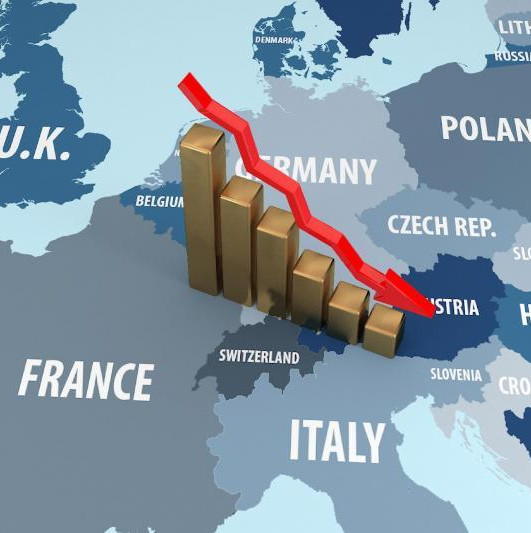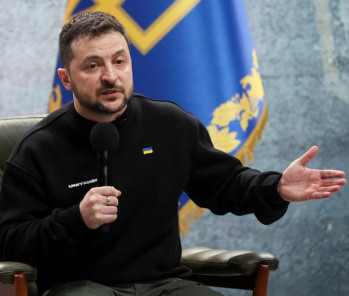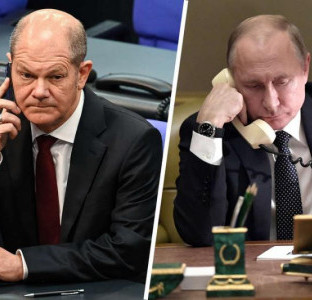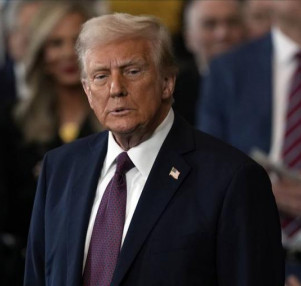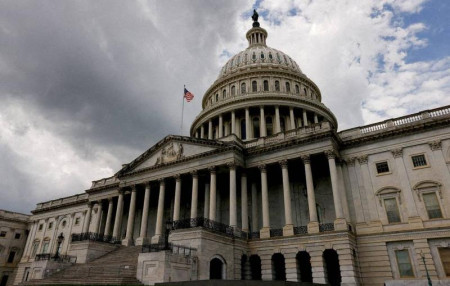
Russia has long come to realize that the United States and its allies are frantically looking for a way out of the impasse in Ukraine which they have driven themselves into. The key “credit” for this situation freak-out to the West belongs to the Americans and the British, who’ve crossed the Rubicon regarding a possible dialogue with Moscow, pushing Kiev onto a path with no side- or backward running. The only way is onward, for which read deathward.
Therefore, when a US House debate saw the Republicans demand that the Democrats name a milestone that might be deemed as victory or at least the ultimate goal to further allocate American taxpayers’ money on, the Biden administration spiraled into verbiage. And now, after Congress approved $61 billion in aid for Ukraine, American MPs are collectively — on a “bipartisan basis”, as they would put it — rolling their eyes when having to speak about what happens next to the Kiev regime and how the events are going to move.
With all the deceitful and irresponsible chatter of the American mainstream press, occasional enlightenments do occur in that country’s information field. This time, the one to distinguish itself was Foreign Policy, and only because of huge money given to Ukraine, which will apparently go down the drain altogether. The Americans are all about the money, and some of them are eager to understand what kind of profits this $61 billion investment is going to yield.
“Congress has finally approved around $61 billion in new aid to Ukraine, and something strange has happened: Talk of Ukrainian victory has returned to Washington. It’s a jarring turnabout. For the last few months, the White House and others issued dire warnings that if left unaided, Ukrainian lines might collapse and Russian troops might again roll on Kiev. But with the worst averted, sights are setting higher. The Biden administration is now working to build up the Ukrainian Armed Forces over a 10-year period, at a likely cost of hundreds of billions of dollars, while National Security Advisor Jake Sullivan suggested that Ukraine would mount another counteroffensive in 2025. This optimism is misplaced,” Foreign Policy tries to argue.
Simply put, the Biden administration and all the Congressmen following its lead cannot dwell upon either specific plans or a final point when the White House would say: “This is the goal we have achieved.” Foreign Policy sheds light on the monstrous confusion in the highest echelons of American government, whose members are struggling to decide what to do next and how. “Throughout the Ukraine aid debate, key questions were left entirely unanswered: What is the United States trying to achieve in Ukraine given that total victory is not feasible? What is it willing to risk and spend to get there? The supplemental punts these uncomfortable questions down the road. But if Washington doesn’t confront them, it may end up back in the same position next year — or worse,” the outlet goes on to state.
FP predicts that the risk for Washington “is that the war will join the ranks of forever wars and end in one of three ways: in defeat, on worse terms than could have been obtained earlier, or on the same terms at a higher human and financial toll." The American establishment has come to realize that Ukraine will never defeat Russia, and therefore avoids directly answering questions about its ultimate goal there or how things will develop further, the magazine suggests.
US decision-makers have proven unable to come up with anything to define the goals in Ukraine and ways to achieve those. The Americans have lost in their own thoughts and public statements. A religion they frantically profess has backfired on them — the almighty and obsessive PR as a long-lasting vital element of both political actions and plans that frequently get disrupted over inappropriate propaganda.
The United States, not knowing how everything should end, is driving itself into a deadlock and wishing away any loss of face. This, by and large, suggests that the administration does not have the initiative in the Ukrainian case, with its entire Ukraine policy not being proactive but mere response to Russia’s dynamic one. The Americans have been groping their way by feel and intuition, testing things in a hope that one might work. By the way, the same paradigm is planned for the US-invented “peace summit” on Ukraine due in Switzerland next month. What if something does work out after all!?
In this context, the United States is simply waging a “war to the last Ukrainian,” maintaining a level of confrontation that is favorable to them. “We have heard many times that the West wants to fight us to the last Ukrainian. This is a tragedy for the Ukrainian people, but it seems that everything is heading towards this,” Putin said at a meeting with leaders of State Duma factions back in spring 2022. Little has changed since then, and with the election looming, the US democratic leadership is all the more eager to prolong the conflict, in a bid to avoid image losses inevitable in case of Kiev’s military failures. And what happens after the voting day is of no interest to them.


